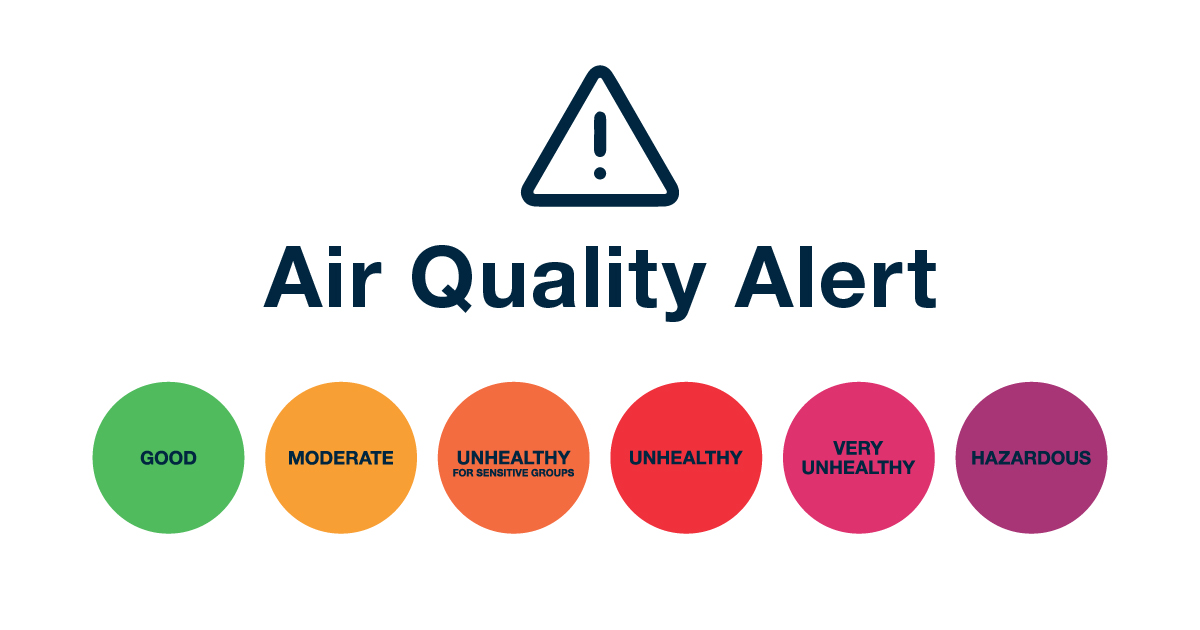Understanding an Air Quality Alert
Posted in Consumer Protection, Health & Wellness, In the news on May 12, 2022

Do you ever go outside and find it more difficult to breathe? In these situations, cities might put out an air quality alert when it could be dangerous to be outside. Here’s a guide to help you understand what the different air quality alerts mean and what to avoid doing during one.
Types of Air Pollution
Air quality alerts come from things that contribute to pollution, including:
- Ground Level Ozone: The most common cause of air pollution involves pollutants like industrial fumes and car exhaust mixing with oxygen. It decreases air quality and can result in respiratory issues.
- Particle Pollution (Particulate Matter): Particles in the air that act as pollutants and can be hazardous. Often caused by chemical processes, this pollution usually occurs in hot/humid temperatures.
- Carbon Monoxide: In cooler conditions, this odorless, colorless gas is released when carbon fuels do not thoroughly burn. This type of pollution is highly toxic and can result in death.
- Sulfur Dioxide: Found near large industrial complexes, this colorless gas can cause difficulty in breathing.
- Nitrogen Dioxide: When nitrogen and oxygen mix, this polluted gas can create respiratory problems or infections.
Air Quality Index (AQI)
The AQI indicates the different air quality levels, and various colors are used to distinguish the population’s risk level.
- Green: Good quality air with little to no risk.
- Yellow: While this quality is still acceptable for most, people who are very sensitive to air pollution may be impacted.
- Orange: Most of the population will not be impacted, but sensitive groups such as the elderly or those with breathing conditions should avoid staying outside.
- Red: The general population may start feeling health effects and sensitive groups are at serious risk.
- Purple: There is a risk for everyone, and the air quality is unhealthy.
- Maroon: Air quality is hazardous, and an emergency state is put in place.
While color codes Purple & Maroon are very uncommon, lower impacts on air quality are frequently seen. For example, this week, The National Weather Service issued an orange air quality advisory for parts of Northeast Ohio, urging sensitive groups to stay inside.
Things to Avoid During an Air Quality Alert
- Try walking or biking instead of driving a car.
- Avoid extended idling in the car.
- Conserve electricity.
- Avoid mowing your lawn during an alert.
- If you need gas, pump after sundown.
- Avoid using a wood stove or fireplace.
- Do not burn trash, leaves, etc.
- Skip the strenuous activities during an alert.
Click HERE to check out the current air quality in your area!